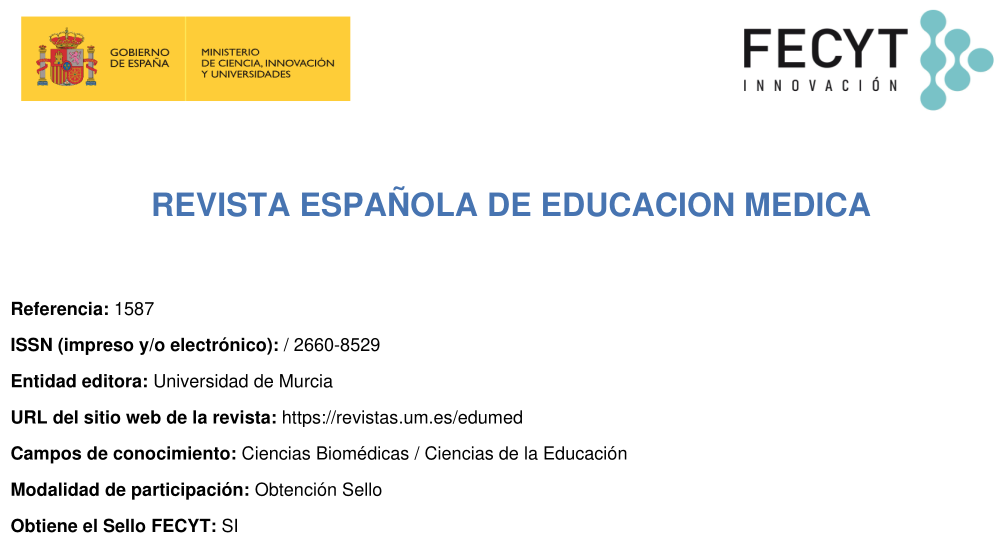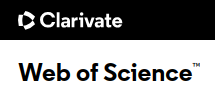Preguntas ContExtended (CEQ) para enseñar y evaluar el razonamiento clínico: una nueva variante de los testlets de tipo F
Resumen
Este estudio presenta las Preguntas ContExtended (CEQ), una herramienta para enseñar y evaluar el razonamiento clínico, especialmente en los años preclínicos, y el programa web para implementarlas. Las CEQ consisten en preguntas de opción múltiple basadas en texto y casos que proporcionan datos del paciente en una secuencia fija y predeterminada. Permiten a los examinados desarrollar y reestructurar sus guiones de enfermedad mediante la retroalimentación después de cada pregunta. La retroalimentación transforma el fracaso del examinado en un "fracaso productivo". Los resultados preliminares del experimento controlado aleatorio de enseñanza de razonamiento clínico a estudiantes preclínicos mediante CEQ son bastante satisfactorios. En la literatura sobre educación médica, esta sería la primera vez que estudiantes con poca o nula experiencia clínica desarrollaran sus guiones de enfermedad simplemente realizando pruebas formativas de opción múltiple. Este enfoque se denominaría "aprendizaje basado únicamente en pruebas". Los resultados completos del experimento y posteriormente más experimentos en otros contextos y dominios son necesarios para establecer una herramienta y un software de evaluación más potentes. Además, al cambiar el contenido de las preguntas, es posible utilizar el CEQ en cualquier período de la educación médica y de las profesiones de la salud.
Descargas
Métricas
-
Resumen731
-
pdf 379
Citas
Norman G. Research in clinical reasoning: past history and current trends. Med Educ, 2005, 39(4), 418-427. DOI: 10.1111/j.1365-2929.2005.02127.x https://onlinelibrary.wiley.com/doi/full/10.1111/j.1365-2929.2005.02127.x
Custers EJ. Thirty years of illness scripts: Theoretical origins and practical applications. Med Teach, 2015, 37(5), 457-462. DOI: 10.3109/0142159X.2014.956052 https://www.tandfonline.com/doi/full/10.3109/0142159X.2014.956052
Cooper N, Da Silva AL, Powell S. Teaching clinical reasoning. En ABC of Clinical Reasoning; 1. ed.; Cooper N, Frain J, Eds.; Editorial: Chichester, UK, 2016, 44-50.
Kassirer JP. Teaching clinical reasoning: case-based and coached. Acad Med 2010, 85(7), 1118-1124. DOI: 10.1097/ACM.0b013e3181d5dd0d https://journals.lww.com/academicmedicine/Fulltext/2010/07000/Teaching_Clinical_Reasoning__Case_Based_and.11.aspx
Ten Cate O, Custers EJ, Durning SJ, Eds. Principles and Practice of Case-based Clinical Reasoning Education: A Method for Preclinical Students. Springer, 2018. https://www.springer.com/gp/book/9783319648279
Schank RC, Abelson RP. Scripts, plans, and knowledge. IJCAI 1975, 75, 151-157. https://home.mis.u-picardie.fr/~furst/docs/Schank_Abelson_Scripts_1975.pdf
Wainer H, Bradlow ET, Wang X. Testlet response theory and its applications. Cambridge, UK, 2007.
Jolly B, Dalton MJ. Written Assessment. En Understanding medical education: evidence, theory and practice; Swanwick T, Forrest K, O’Brien BC, Eds.; New Jersey, USA, 2019, 291-317.
Durak HI, Caliskan SA, Bor S, Van Der Vleuten C. Use of case-based exams as an instructional teaching tool to teach clinical reasoning. Med Teach, 2007, 29(6), e170-e174. DOI: 10.1080/01421590701506866 https://www.tandfonline.com/doi/full/10.1080/01421590701506866
Lubarsky S, Dory V, Audétat MC, Custers E, Charlin B. Using script theory to cultivate illness script formation and clinical reasoning in health professions education. Can Med Educ J, 2015, 6(2), e61. https://www.ncbi.nlm.nih.gov/pmc/articles/PMC4795084/
Cooper N, Bartlett M, Gay S, Hammond A, Lillicrap M, Matthan J, Singh M. UK Clinical Reasoning in Medical Education (CReME) consensus statement group. Consensus statement on the content of clinical reasoning curricula in undergraduate medical education. Med Teach, 2020, 1-8. DOI: 10.1080/0142159X.2020.1842343 https://www.tandfonline.com/doi/full/10.1080/0142159X.2020.1842343
Haladayna TM, Downing SM, Rodriguez MC. A review of multiple-choice item-writing guidelines for classroom assessment. Appl Meas Educ, 2002, 15(3), 309-333. DOI: 10.1207/S15324818AME1503_5 https://www.tandfonline.com/doi/abs/10.1207/S15324818AME1503_5
Pugh D, De Champlain A, Touchie C. Plus ça change, plus c’est pareil: making a continued case for the use of MCQs in medical education. Med Teach, 2019, 41(5), 569-577. DOI: 10.1080/0142159X.2018.1505035 https://www.tandfonline.com/doi/full/10.1080/0142159X.2018.1505035
Shumway JM, Harden RM. AMEE Guide No. 25: The assessment of learning outcomes for the competent and reflective physician. Med Teach, 2003, 25(6), 569-584. DOI: 10.1080/0142159032000151907 https://www.tandfonline.com/doi/abs/10.1080/0142159032000151907
Kapur M. Productive failure. Cogn Instr, 2008, 26(3), 379-424. DOI: 10.1080/07370000802212669 https://www.tandfonline.com/doi/full/10.1080/07370000802212669
Steenhof N, Woods NN, Van Gerven PW, Mylopoulos M. Productive failure as an instructional approach to promote future learning. Adv Health Sci Educ, 2019, 24(4), 739-749. DOI: 10.1007/s10459-019-09895-4 https://link.springer.com/article/10.1007/s10459-019-09895-4
Ramani S, Krackov SK. Twelve tips for giving feedback effectively in the clinical environment. Med Teach, 2012, 34(10), 787-791. DOI: 10.3109/0142159X.2012.684916 https://www.tandfonline.com/doi/full/10.3109/0142159X.2012.684916
Butler AC, Roediger HL. Feedback enhances the positive effects and reduces the negative effects of multiple-choice testing. Mem Cognit, 2008, 36(3), 604-616. DOI: 10.3758/MC.36.3.604 https://link.springer.com/article/10.3758/MC.36.3.604
Black P, Wiliam D. Assessment and classroom learning. Assessment in education: principles. Policy Pract, 2006, 5(1), 7–74. DOI: 10.1080/0969595980050102 https://www.tandfonline.com/doi/abs/10.1080/0969595980050102
Sandars J. The use of reflection in medical education: AMEE Guide No. 44. Med Teach, 2009, 31(8), 685-695. DOI: 10.1080/01421590903050374 https://www.tandfonline.com/doi/full/10.1080/01421590903050374
Nendaz MR, Raetzo MA, Junod AF, Vu NV. Teaching diagnostic skills: clinical vignettes or chief complaints?. Adv Health Sci Educ, 2000, 5(1), 3-10. DOI: 10.1023/A:1009887330078 https://link.springer.com/article/10.1023/A:1009887330078
Pinnock R, Anakin M, Lawrence J, Chignell H, Wilkinson T. Identifying developmental features in students’ clinical reasoning to inform teaching. Med Teach, 2019, 41(3), 297-302. DOI: 10.1080/0142159X.2018.1463433 https://www.tandfonline.com/doi/full/10.1080/0142159X.2018.1463433
Schmidt HG, Mamede S. How to improve the teaching of clinical reasoning: a narrative review and a proposal. Med Educ, 2015, 49(10), 961-973. DOI: 10.1111/medu.12775 https://onlinelibrary.wiley.com/doi/full/10.1111/medu.12775
Durning SJ, Artino AR. Situativity theory: a perspective on how participants and the environment can interact: AMEE Guide no. 52. Med Teach, 2011, 33(3), 188-199. DOI: 10.3109/0142159X.2011.550965 https://www.tandfonline.com/doi/full/10.3109/0142159X.2011.550965
Derechos de autor 2021 Servicio de Publicaciones de la Universidad de Murcia

Esta obra está bajo una licencia internacional Creative Commons Atribución-NoComercial-SinDerivadas 4.0.
Las obras que se publican en esta revista están sujetas a los siguientes términos:
1. El Servicio de Publicaciones de la Universidad de Murcia (la editorial) conserva los derechos patrimoniales (copyright) de las obras publicadas y favorece y permite la reutilización de las mismas bajo la licencia de uso indicada en el punto 2.
© Servicio de Publicaciones, Universidad de Murcia
2. Las obras se publican bajo una licencia Creative Commons Reconocimiento-NoComercial-SinObraDerivada 4.0.
![]()
3. Condiciones de auto-archivo. Se permite y se anima a los autores a difundir electrónicamente las versiones preprint (versión antes de ser evaluada y enviada a la revista) y/o post-print (versión evaluada y aceptada para su publicación) de sus obras antes de su publicación, ya que favorece su circulación y difusión más temprana y con ello un posible aumento en su citación y alcance entre la comunidad académica.



















